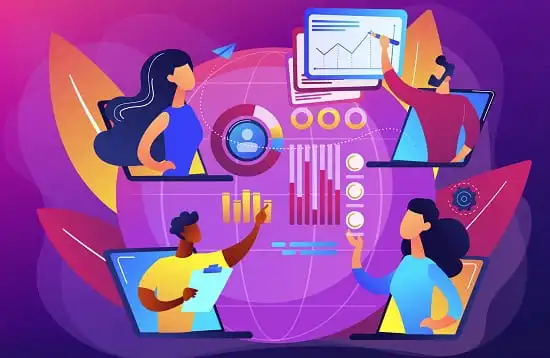It will not be wrong to say that every aspect of our lives has been changed by technology, from our interpersonal communication to our economy, entertainment industry, and even our education. Students today face changes that have a profound impact not just on their learning, but also on their everyday lives. Technology has a tremendous impact on a new generation of students, and it cannot be ignored. The modernization of education is long overdue, as children grow up with laptops, tablets, and modern gadgets. In those circumstances, technology becomes even more important in education. New technologies with the potential to improve teaching have been gradually introduced over the years, allowing for a change in learning styles.
E-learning alternatives coupled with high-speed broadband internet have caused a series of changes in the education sector in recent years. It is undeniable that the use of the Internet for education has revolutionized traditional education. Moreover, it enables resources and data to be shared without restriction, which has encouraged remote and seamless learning.
Note: For those interested in high-speed internet to keep their e-learning processes humming, Charter Spectrum might be a good option. Rates are affordable, and there are no data caps, so you can get unlimited data.
Despite the challenges presented by the digital age in education and every aspect of life, it is fantastic to see that students seem ready to adapt to technology in the classroom. Therefore, it is important for students to learn to harness the potential of today’s society during their school years.
Having that said, this post is all about what technology has helped develop the education sector. Below are some of the benefits of technology and internet in education:
Provides a variety of learning styles
The days of “one-size-fits-all” education are fading away. With more tools available than ever before, today’s teachers are able to engage their students inside and outside the classroom, regardless of their learning style. Learn how to integrate technology and styles of learning.
In addition to meeting the needs of students’ individual learning styles, using technology both inside and outside the classroom has a number of other advantages. This is particularly true for students with unique needs, such as those who are not English speakers or those with disabilities.
Encourages Collaboration
A major benefit of technology in the classroom is that it promotes collaboration. Digitally transporting files and images is just as easy as sharing ideas and opinions over the Internet.
Social networking sites, such as Facebook, Twitter, Instagram, and Snapchat, are popular places for students to share their experiences outside of the classroom. Therefore, it makes sense that technology will enhance collaboration in the classroom. Through internet connectivity, students can be connected to one another from different cities, schools, countries, or even different countries.
Educates children about the future
Our children are being prepared for a world where technology rules with an iron fist in many ways, thanks to technology. Without computers, smartphones, and the internet, you cannot keep up with society. We are living in a world dominated by technology, and it’s here to stay. Technology will play a critical role in success in the future.
The number of stories you hear and see about children who are glued to screens is staggering. Children are increasingly absorbed in technology, whether they are watching YouTube, playing computer games, or watching old-fashioned television shows. It is good that they are becoming more aware of the world around them and preparing themselves for the future in this way. They are aware of everything going on around them, so they have an opinion on everything.
Provides teachers with instant feedback
A good way to improve student performance is to provide effective feedback. Through constructive feedback, teachers are able to develop and maintain long-term relationships with their students. Teachers can provide individualized assistance to students with the help of education technology. It is possible for instructors to deliver timely, effective feedback with the ability to achieve greater learning when they use the right technology. Overall, technology improves and speeds up the feedback loop. In this way, the process becomes that much more meaningful and productive.
Wrapping Up
The importance of technology in education cannot be overstated. Do you have any idea what this means? Technology has allowed learners to learn beyond the classroom and their textbooks, notes, and teachers through its impact on education.
It is now possible for students to gain a deeper understanding of a variety of important issues, topics, and concepts that are important to them. As we look to the future, we have to explore technology’s place in higher education and integrate it into more innovative learning environments.

Rahul Kumar is a passionate educator, writer, and subject matter expert in the field of education and professional development. As an author on CoursesXpert, Rahul Kumar’s articles cover a wide range of topics, from various courses, educational and career guidance.




